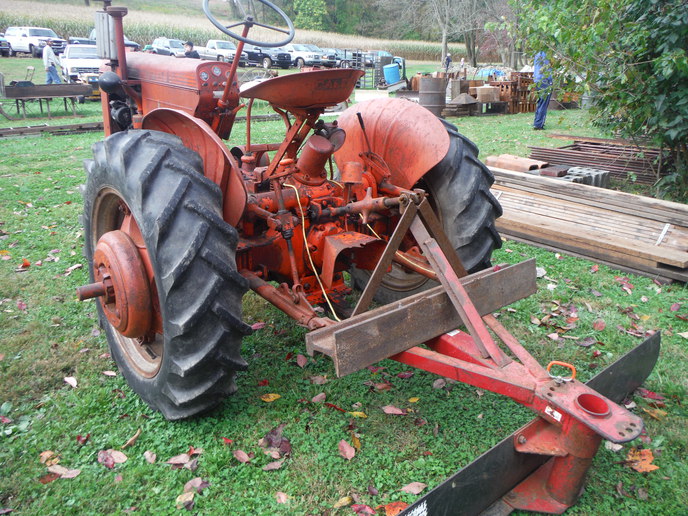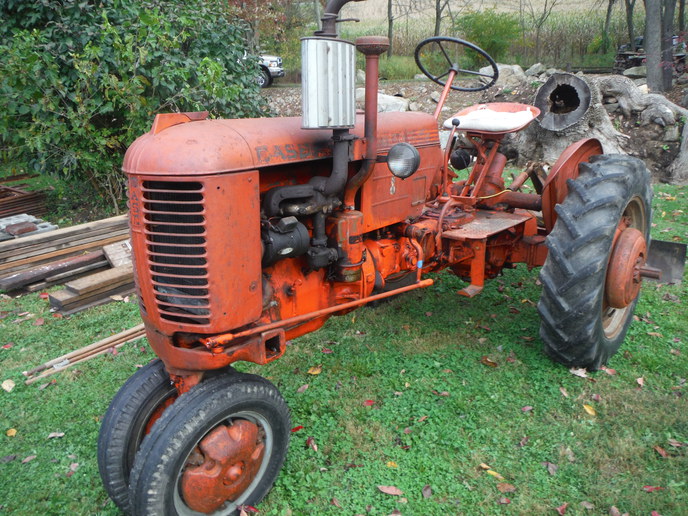Anonymous-0
Well-known Member
While we all have our brand preferences, how did these tractors (and other competitors) compare performance-wise?
No fish stories please.........
Glenn F.
No fish stories please.........
Glenn F.


Location, location, location!this one brought 2000 at an auction last week in pa
(quoted from post at 17:06:18 10/16/13) by the way didn't henry ford cheat a little on the Nebraska test by running the test tractor engine faster and I believe he used dual rear wheels too.
(quoted from post at 17:06:18 10/16/13) by the way didn't henry ford cheat a little on the Nebraska test by running the test tractor engine faster and I believe he used dual rear wheels too.
(quoted from post at 17:54:46 10/16/13) I'm partial to the Fords of that era.
Nimble, versatile utility tractors.
That said, I still think HP to weight ratio the AC's had it.
The FarmAll A/B/BN had a definite advantage in cultivating.
That offset engine/steering wheel provided a great view.
I still own one or more of each of the above.
The Fords are the ones that get used because of the 3PT.
(quoted from post at 04:43:50 10/17/13)(quoted from post at 17:06:18 10/16/13) by the way didn't henry ford cheat a little on the Nebraska test by running the test tractor engine faster and I believe he used dual rear wheels too.
How is it cheating to design a motor that develops it power at a different RPM from most others?
(quoted from post at 07:49:39 10/17/13)(quoted from post at 17:54:46 10/16/13) I'm partial to the Fords of that era.
Nimble, versatile utility tractors.
That said, I still think HP to weight ratio the AC's had it.
The FarmAll A/B/BN had a definite advantage in cultivating.
That offset engine/steering wheel provided a great view.
I still own one or more of each of the above.
The Fords are the ones that get used because of the 3PT.
From the Hotline guide I get .01 HP per lb for the 9N and .009 for the ACB.

(quoted from post at 05:27:20 10/17/13) The thing was that Ford sold the N series in terms of productivity as well as power and that created confusion as farmers then were not sophisticated in terms of talking about PTO horsepower versus drawbar horsepower and related topics. Also, there was a lot of talking through hats as to what tractor could do what. Plowing was still the big chore on a lot of farms and then N series could perform neck and neck with a tractor several horsepower or more larger. I[b:31eee1748f] think one of the Ford books you could buy at TSC had a piece on how the N could match a Farmall M in terms of acres plowed per hour which was due to the light weight and weight transfer of the Ford.[/b:31eee1748f] Where things got screwy if the salesman and farmer were less than sharp were figuring the belt/ PTO/ associated needs for the farmer. If a farmer had a 1 row PTO driven forage harvester he needed to have more horsepower than a N or if he had to cultivate a crop standing in excess of 3 feet he needed a row crop tractor. Reasons like the forage harvester or cultivating were why you did not see very many N series where I live back in the day. Now if Ford had developed a 35 plus Belt horsepower N then who knows.
(quoted from post at 05:44:49 10/17/13)(quoted from post at 04:43:50 10/17/13)(quoted from post at 17:06:18 10/16/13) by the way didn't henry ford cheat a little on the Nebraska test by running the test tractor engine faster and I believe he used dual rear wheels too.
How is it cheating to design a motor that develops it power at a different RPM from most others?
It's cheating when your rated RPM is 1450, and you send the tractor to the test with the governor adjusted to turn 1800.
Of course, unless he also changed the gearing in the test tractor, it did him absolutely no good.
We sell tractor parts! We have the parts you need to repair your tractor - the right parts. Our low prices and years of research make us your best choice when you need parts. Shop Online Today.
Copyright © 1997-2024 Yesterday's Tractor Co.
All Rights Reserved. Reproduction of any part of this website, including design and content, without written permission is strictly prohibited. Trade Marks and Trade Names contained and used in this Website are those of others, and are used in this Website in a descriptive sense to refer to the products of others. Use of this Web site constitutes acceptance of our User Agreement and Privacy Policy TRADEMARK DISCLAIMER: Tradenames and Trademarks referred to within Yesterday's Tractor Co. products and within the Yesterday's Tractor Co. websites are the property of their respective trademark holders. None of these trademark holders are affiliated with Yesterday's Tractor Co., our products, or our website nor are we sponsored by them. John Deere and its logos are the registered trademarks of the John Deere Corporation. Agco, Agco Allis, White, Massey Ferguson and their logos are the registered trademarks of AGCO Corporation. Case, Case-IH, Farmall, International Harvester, New Holland and their logos are registered trademarks of CNH Global N.V.
Yesterday's Tractors - Antique Tractor Headquarters
Website Accessibility Policy
